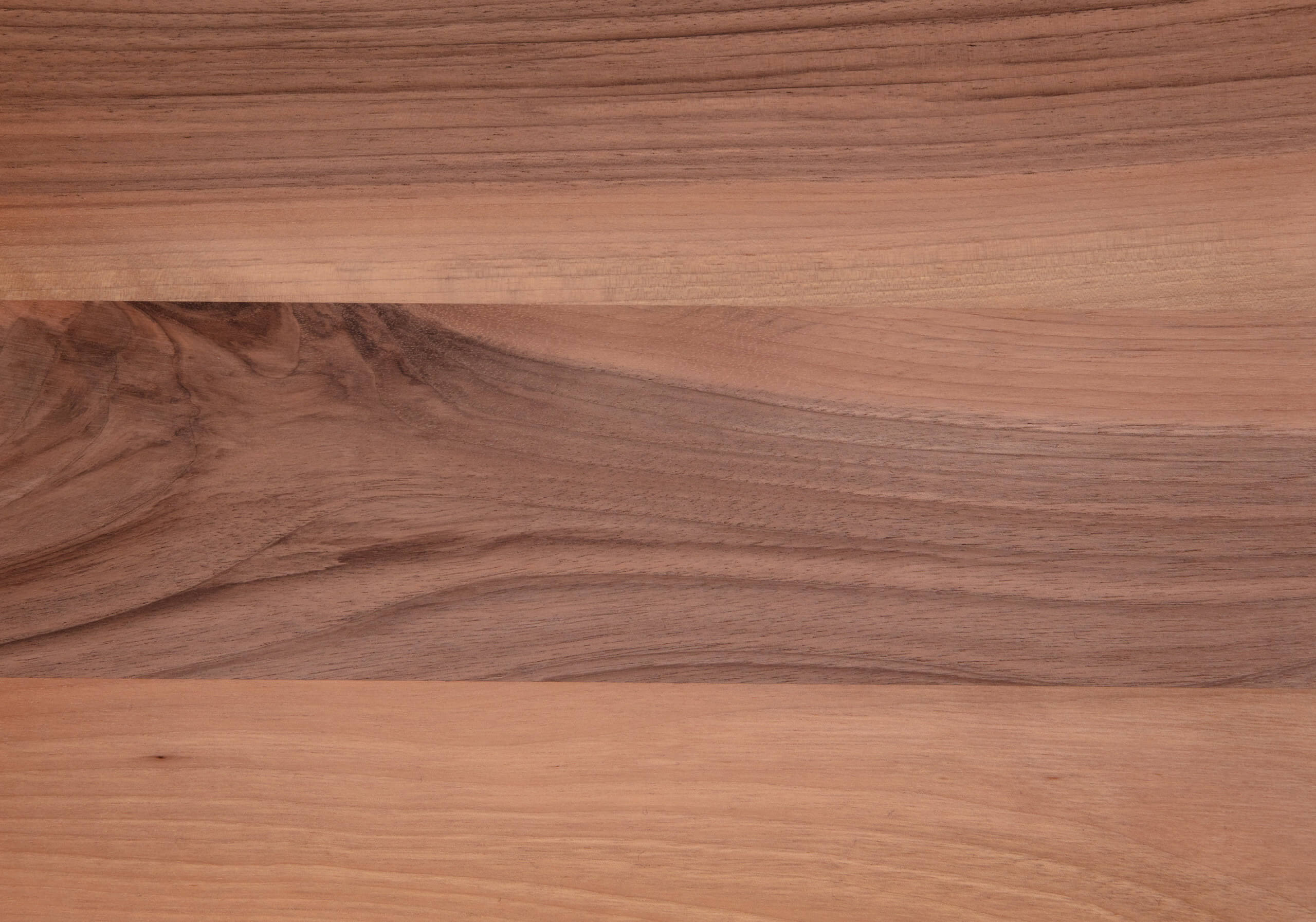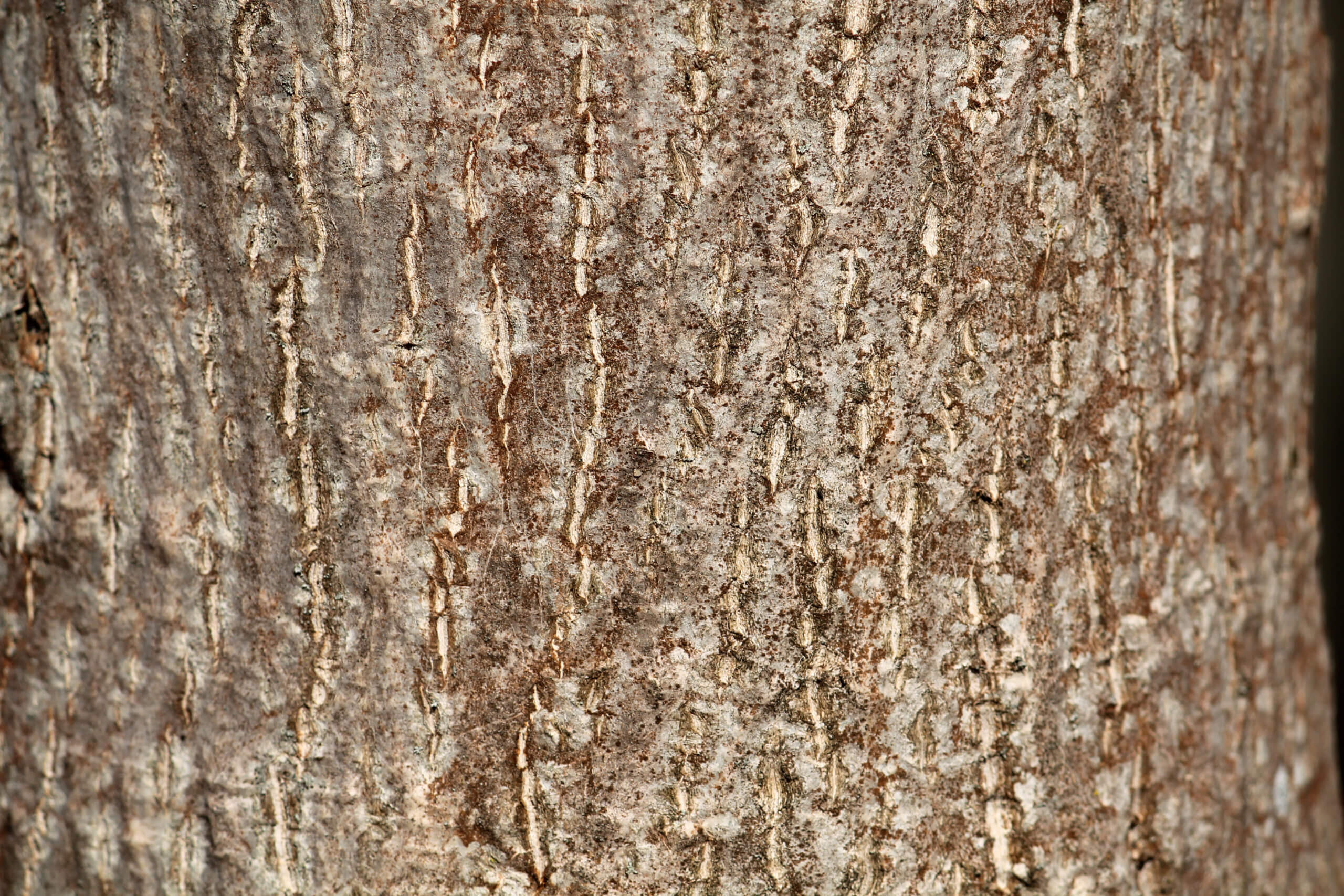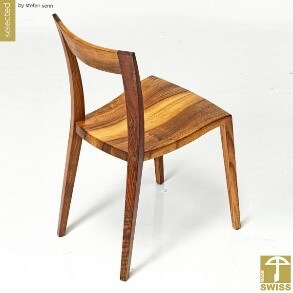European walnut/ Common Walnut
bot. Juglans

Thanks to its dark, noble appearance, the wood of the European walnut is a highly valued and widely used wood in furniture and interior design. The wood is often striped or grained and, especially in combination with the lighter sapwood, offers an extremely decorative and appealing look. As a rule, the walnut trees are dug out together with the rootstock, from which the sought-after burl veneers are extracted. Supply of the valuable wood on the timber market is rather low, which enhances its exclusive character. Due to the limited availability of the European walnut, the American walnut (juglans nigra) is used as an option.
Comments
Sapwood minimal, heartwood fairly fungus and insect resistant. Not weather resistant.
Hardness grade
25 - 28 Brinell
Color
Light- to black-brown heartwood with clearly defined grayish to reddish-white sapwood area.
Color change
Natural yellowing.
Origin
- Introduced from Eastern Europe and the Near East into Central and Western Europe (as a fruit tree). The most magnificent examples are found in France, the most beautiful nut trees in Switzerland can be found at Lake Lucerne.
- The European walnut tree is found mainly in warmer western and central Europe as far as the Mediterranean and Black Sea countries. The main suppliers are France, Italy, Turkey, Greece and Persia.
Wood character
- Optical appearance, characteristic of the wood.
- The heartwood appears very noble with its light to black-brown colour and the often striped or grained appearance.
- The clearly delineated sapwood area is visibly lighter with a greyish to reddish-white colour.
- The annual ring boundaries are clearly visible, the grains are arranged in a semi-circular pattern.
- Due to the impact of sunlight and other environmental factors, the walnut wood will yellow over time.
Use
- The noble wood is widely used in the field of furnishing (tables and table tops, bedsteads, chairs, etc.)
- Furniture components (legs, bars, handles, etc.)
- Items such as handles for knives, rifle stocks, etc.
Characteristics
Weight: 680 KG/M³
Weight (Average bulk density air dry, ᵨ 12...15)
Average hardness: 27 N/MM²
Average hardness according to Brinell (radial)
Stability: mittel bis gut
Dimensional and form stability
Durability: mässig dauerhaft
Natural durability according to DIN-EN 350-2



